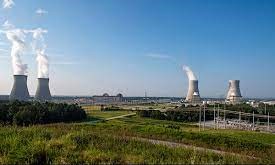06 Mar 2024
Do You Worry Rising Costs Will Negatively Affect Your Utility’s Bottomline Each Year?

Have you recently considered the various factors that impact your utility company’s revenue? At the end of any budget year, it is common for utility companies to face a challenging financial situation with a revenue shortfall to pay for projected expenses. It is essential to understand that revenues and expenses are not static; they require periodic monitoring and proactive adjustment to maintain financial sustainability.
Short and Intermediate Term:
Achieving financial sustainability is a primary goal for any utility. However, a clear understanding of the factors that affect the bottom line is crucial to achieving it. Recently, members of ECG have engaged in several discussions regarding the ongoing effort to meet revenue requirements in light of changing costs. Abnormal weather, which affects sales volume and revenue, and the volatile wholesale energy market are key factors to consider during the fiscal year. Most members already have Power Cost Adjustment (PCA) in place to deal with short-term changes, but active financial monitoring may lead to more periodic adjustments of PCA.

The volatile energy market will change the wholesale bill, the most expensive line item in the long list of expenses. A short member—a member who does not have sufficient resources to serve load—typically buys market energy. During volatility, short members may see their wholesale bill increase over budget. A long city that sells excess energy to the market can experience either reduced or increased wholesale bills, depending on the market’s temperament.
Analytical Services can provide members with revenue projections during budget time for a new fiscal year. If revenues do not align with revenue requirements, we suggest implementing an immediate change to the PCA at the beginning of the fiscal year. Through active monitoring, we can suggest changes to the PCA as necessary as costs and revenues accrue during the fiscal year.
Long-Term
Looking to the future, MEAG Power recently completed a new 10-year wholesale cost projection and will review it with members in the coming weeks. If MEAG wholesale costs and/or if local costs rise (e.g., increase in 1) general fund transfer; 2) personnel due to the hiring of additional staff; or 3) repair and maintenance budget) substantially, it may be best to adjust your rates to permanently bring in additional revenues instead of adjusting PCA.

Additionally, at the 2023 ECG Annual Meeting, MEAG discussed a potential Vogtle Funding Gap in 2036-2044 for Vogtle Projects J&P. Because of Vogtle’s construction delays, Power South and JEA began paying the associated construction costs before receiving any energy from the unit. This payment stream means that toward the end of Project J & P, members will shoulder the associated costs before receiving any energy from Vogtle. MEAG is assessing the magnitude of the potential Vogtle Funding Gap. Once the impact is known, ECG can further assist with long-term planning.
In Summary, energy prices are known to be more unstable compared to other commodities. This volatility is mainly due to weather changes, which significantly affect the energy market. For utilities, it is essential to end the year with a balanced revenue and expense. Analytical services can assist in monitoring the revenues and expenses monthly while making recommendations for the PCA to achieve this balance.


Chau Nguyen
Director, Analytical Services
Chau Nguyen